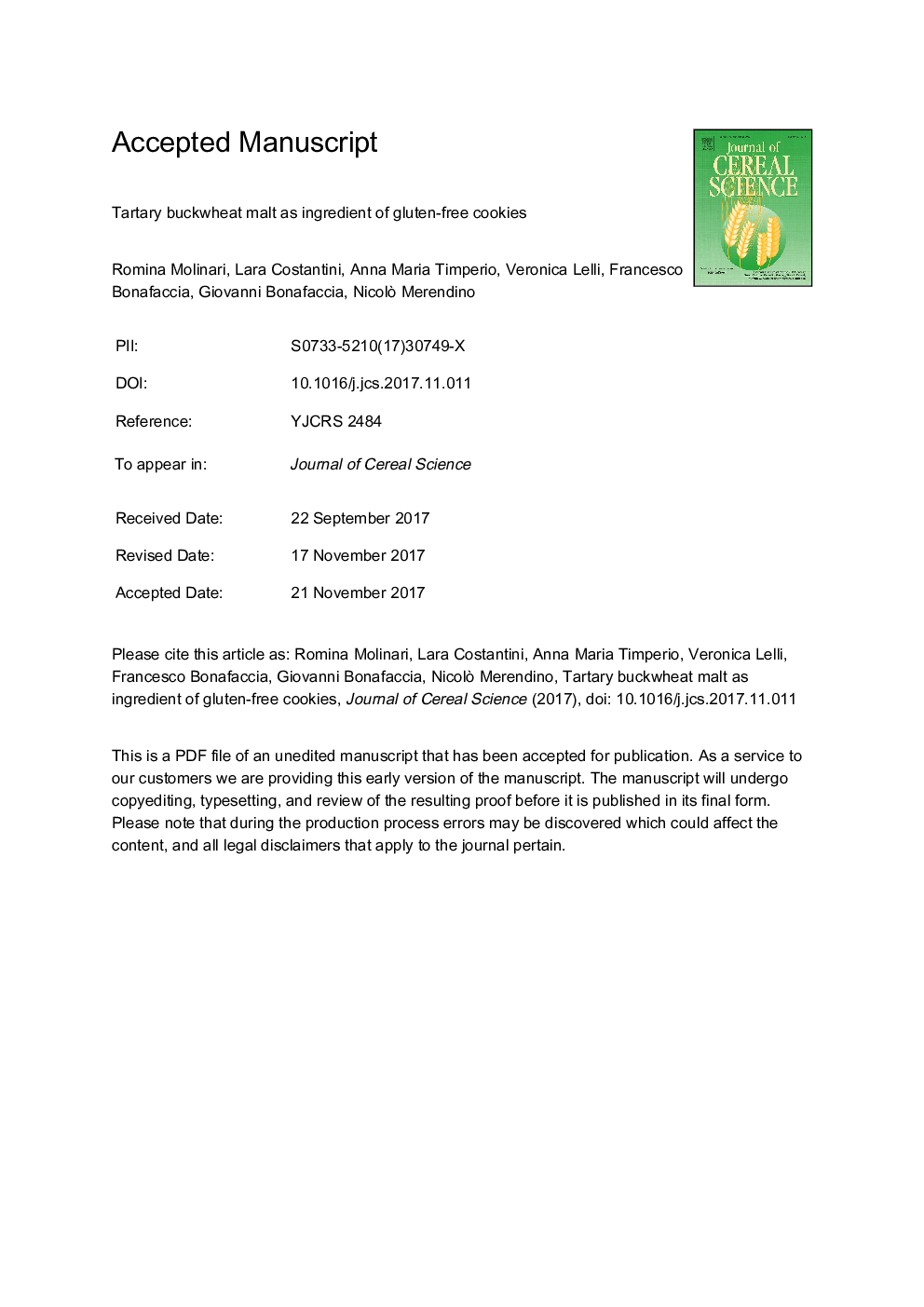| Article ID | Journal | Published Year | Pages | File Type |
|---|---|---|---|---|
| 8881360 | Journal of Cereal Science | 2018 | 29 Pages |
Abstract
The impact of malting on the profile of the phenolic compounds and the antioxidant properties of tartary buckwheat (Fagopyrum tataricum L. Gaertn.) was investigated. A considerable increase in total phenolic compounds and higher antioxidant activity were observed after 88 h of germination. The highest relative increases in phenolic compounds were observed for quercetin, orientin, and vitexin, which are consequently major inducible phenolic compounds during malting. Only a minor relative increase was observed for the most abundant phenolic compound, rutin. Formulations of gluten-free cookies based on rice flour and buckwheat malt or flour in ratios 70:30, have been produced. In the raw material and cookies the proximate composition, starch, resistant starch, total polyphenols, profile of polyphenols, antioxidant activity and expected glycemic index were determined. Gluten-free cookies made with rice flour and buckwheat malt exhibited significantly higher total phenolic and quercetin contents. Comparing to control cookies higher antioxidant activity and lower glycemic index (p < 0.05) was found.
Related Topics
Life Sciences
Agricultural and Biological Sciences
Agronomy and Crop Science
Authors
Romina Molinari, Lara Costantini, Anna Maria Timperio, Veronica Lelli, Francesco Bonafaccia, Giovanni Bonafaccia, Nicolò Merendino,
